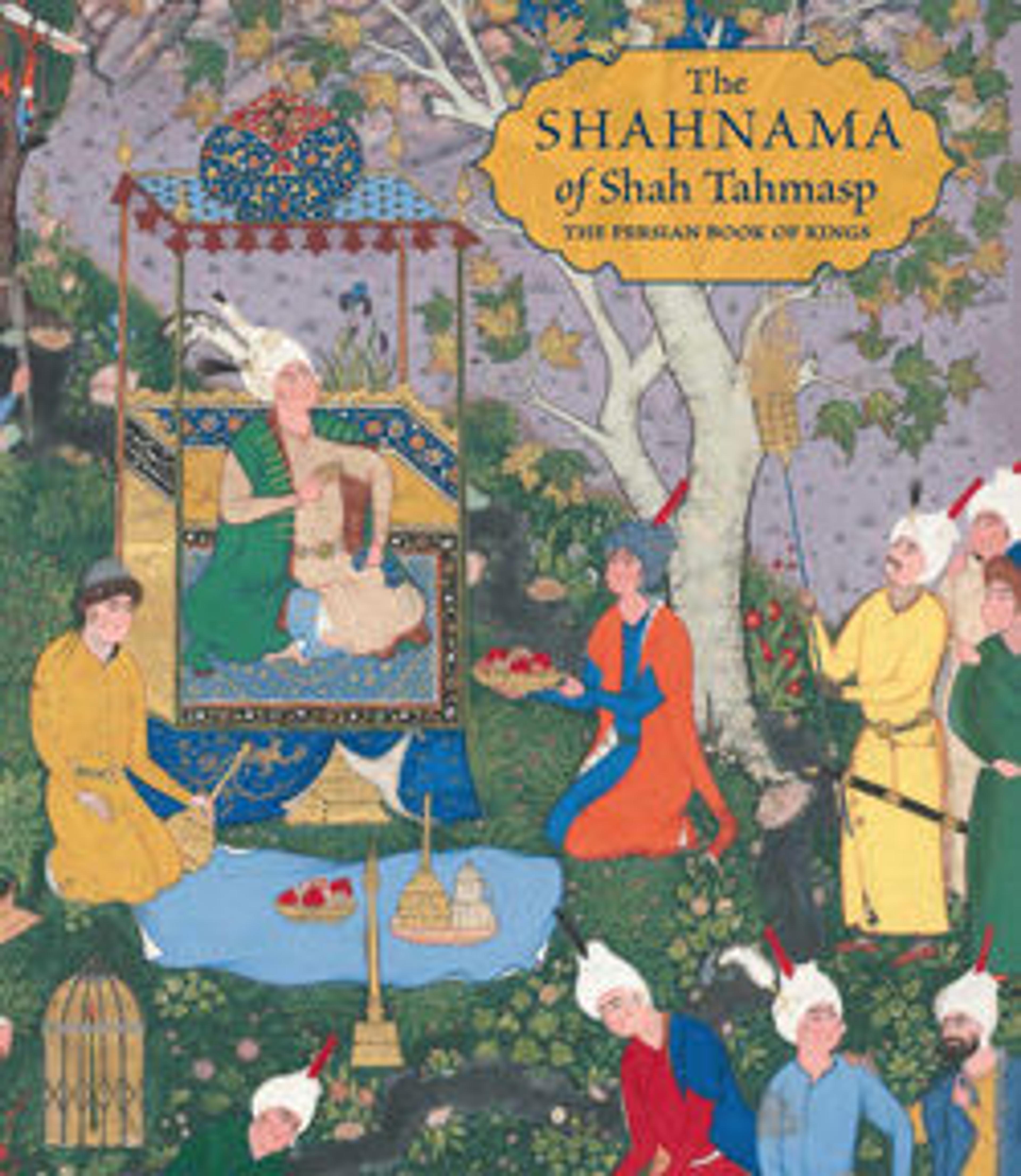"Rustam's Fourth Course, He Cleaves a Witch", Folio 120v from the Shahnama (Book of Kings) of Shah Tahmasp
The hero Rustam underwent seven tests of valor on his way to rescue Shah Kai Kavus. The artist has illustrated the climax of Rustam’s fourth course when the beautiful maiden who had beguiled him turned back into the witch she really was, to be dispatched by his sword. The sorcerer in the background, raising his hands in horror, has been borrowed from Turkmen artistic sources, while the profile of the sorceress is an exaggerated version of the conventional one for the old retainer or crone. Note the faces of animals and humans incorporated in the rocks, a favorite element of the early paintings of Tahmasp’s Shahnama.
Artwork Details
- Title:"Rustam's Fourth Course, He Cleaves a Witch", Folio 120v from the Shahnama (Book of Kings) of Shah Tahmasp
- Author:Abu'l Qasim Firdausi (Iranian, Paj ca. 940/41–1020 Tus)
- Artist:Painting attributed to Qadimi (Iranian, active ca. 1525–1565)
- Date:ca. 1525
- Geography:Made in Iran
- Medium:Opaque watercolor, ink, silver, and gold on paper
- Dimensions:Painting:
H. 11 3/16 in. (28.5 cm)
W. 7 5/16 in. (18.6 cm)
Page:
H. 18 5/8 in. (47.3 cm)
W. 12 1/2 in. (31.8 cm)
Mat:
H. 22 in. (55.9 cm)
W. 16 in. (40.6 cm) - Classification:Codices
- Credit Line:Gift of Arthur A. Houghton Jr., 1970
- Object Number:1970.301.17
- Curatorial Department: Islamic Art
More Artwork
Research Resources
The Met provides unparalleled resources for research and welcomes an international community of students and scholars. The Met's Open Access API is where creators and researchers can connect to the The Met collection. Open Access data and public domain images are available for unrestricted commercial and noncommercial use without permission or fee.
To request images under copyright and other restrictions, please use this Image Request form.
Feedback
We continue to research and examine historical and cultural context for objects in The Met collection. If you have comments or questions about this object record, please contact us using the form below. The Museum looks forward to receiving your comments.
